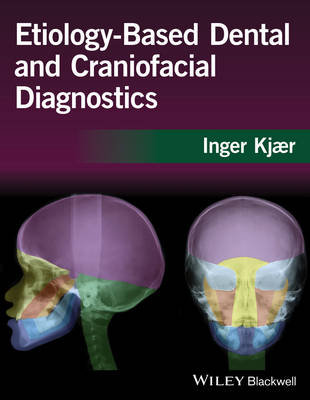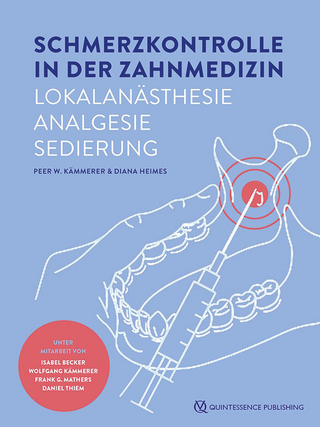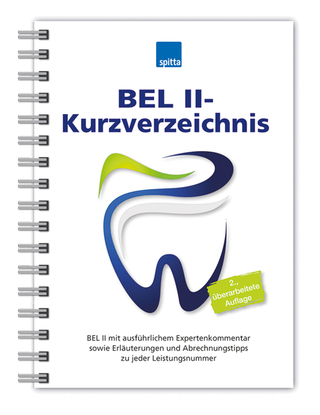
Etiology-Based Dental and Craniofacial Diagnostics
Wiley-Blackwell (Verlag)
978-1-118-91212-6 (ISBN)
- Titel z.Zt. nicht lieferbar
- Versandkostenfrei innerhalb Deutschlands
- Auch auf Rechnung
- Verfügbarkeit in der Filiale vor Ort prüfen
- Artikel merken
Unique new work from a leading authority in orthodontics, craniofacial embryology and fetal pathology
Demonstrates how human prenatal development offers unique insights into postnatal diagnosis and treatment
Clinical significance and implications are highlighted in summaries at the end of each chapter
Ideal for postgraduate students in orthodontics, paediatric dentistry and oral medicine
Inger Kjær is Professor Emerita at the University of Copenhagen, Denmark. A specialist in orthodontics, Inger has two doctoral theses; one in odontology and one in medicine. She has held university positions for 29 years and chief clinical positions in orthodontics and pediatric dentistry outside the university for 11 years. These positions have formed the basis for 214 international scientific articles and a worldwide teaching experience for pre- and postgraduate professionals. Inger is co-author of The Prenatal Human Cranium: Normal and Pathological Development (Wiley-Blackwell, 1999).
Preface, ix
Introduction, xi
Limited access to human material, xi
Content and structure of the book, xi
Acknowledgments, xii
1 Craniofacial development and the body axis: normal and pathological aspects from early prenatal to postnatal life, 1
Body axis pre- and postnatally, 1
Germ disk and notochord, 1
Formation of the vertebral column, 1
Cervical spine pre- and postnatally, 1
The interrelationship between the body axis and the cranium, 2
Craniofacial development pre- and postnatally, 4
Cranial base (excluding the sella turcica), 4
Sella turcica, 7
Maxilla, 8
Mandible, 12
Theca cranii, 15
Vomeral bone, 16
Nasal bones, 17
Temporal bone, 18
Craniofacial morphology and growth, 19
Highlights and clinical relevance, 19
Further reading, 19
2 Craniofacial development and the brain: normal and pathological aspects from early prenatal to postnatal life, 21
Central nervous system in relation to neurocranial development pre- and postnatally, 21
Brain, 21
Spinal cord, 24
Trigeminal ganglia, 26
Vomeronasal organs, 26
Pituitary gland and sella turcica, 28
Peripheral nervous system pre- and postnatally, 32
Jaw innervation and bone formation, 32
Highlights and clinical relevance, 34
Further reading, 35
3 Developmental fields in the cranium and alveolar process, 37
Definition of developmental field, 37
Developmental fields in the cranium, 37
The midaxial cranium, 37
The paraaxial cranium, 37
Frontonasal field, 37
Maxillary field and palatine field, 38
Mandibular field, 40
Theca field, 41
Occipital field, 41
How can craniofacial fields be proven?, 42
Frontonasal field, 42
Maxillary and palatine field, 42
Mandibular field, 43
Theca field, 43
Occipital field, 43
Developmental fields in the alveolar process, 44
The upper jaw and the dentition, 44
The lower jaw and the dentition, 44
Highlights and clinical relevance, 45
Further reading, 45
4 Tooth development and tooth maturation from early prenatal to postnatal life, 46
Histological evaluation of early tooth development, 46
Tissues involved in dental bud formation, 46
Inner enamel epithelium and hard tissue formation, 46
Outer enamel epithelium and crown follicle, 46
Root membrane and root development, 48
Sequences in prenatal tooth formation, 49
Radiographic evaluation of normal dental maturation, 49
Radiographic appearance of prenatal crowns before GA 22 weeks, 50
Radiographic appearance of postnatal dental maturation, 50
Clinical evaluation of dental maturity, 52
Bilateral agreement in tooth maturation, 52
Tooth formation from the initial stages to the eruption stages: relation to fields, gender, age, and skeletal maturity, 52
Similarities and differences in primary and permanent dental development, 53
Highlights and clinical relevance, 53
Further reading, 55
5 Periodontal membrane and peri-root sheet, 56
Periodontal membrane, 56
Peri-root sheet, 56
Definition, 56
Composition and function, 56
The peri-root sheet in the primary and permanent dentition, 56
Highlights and clinical relevance, 58
Further reading, 60
6 Normal tooth eruption and alveolar bone formation, 61
Tooth eruption mechanism and alveolar bone formation, 61
Preemergence phase, 61
Tooth eruption and jaw growth, 66
Jaw size and space, 66
Eruption sequences in the primary and permanent dentition, 68
Bilaterality, 70
Early and late eruption, 70
Highlights and clinical relevance, 71
Further reading, 72
7 Etiology-based diagnostics: methods and classification of abnormal development, 73
Why use etiology-based diagnostics?, 73
Definitions of key words, 73
Etiology, 73
Other key words, 76
Analyzing the dentition, oral cavity, and cranium: practical guide, 77
Anamnestic record, 77
Diagrams for diagnostics, 80
Highlights and clinical relevance, 80
Further reading, 80
8 Deviation in tooth morphology and color: normal and pathological variations including syndromes, 81
Primary dentition: crown, root, and pulp, 81
Malformation of incisors, canines, and molars, 81
Disruption in the primary dentition, 81
Dysplasia in the primary dentition, 87
Permanent dentition: crown, root, and pulp, 88
Malformation of incisors, canines, premolars, and molars, 88
Disruption in the permanent dentition, 98
Dysplasia in the permanent dentition, 106
Abnormal dental development: fields and bilateralism, 107
How to analyze the etiology behind deviation in tooth morphology: is it malformation, disruption or dysplasia?, 109
Highlights and clinical relevance, 109
Further reading, 110
9 Deviations in tooth number: normal and pathological variations including syndromes, 111
Agenesis: possible etiologies, 111
Agenesis of the primary and permanent dentition: hypodontia, 111
Primary dentition agenesis, 111
Permanent dentition agenesis, 112
Syndromes, disruption, dysplasia, and hypodontia, 114
Supernumerary teeth: possible etiologies, 118
Supernumerary teeth in the primary and permanent dentition: hyperdontia, 118
Primary dentition supernumeraries, 118
Permanent dentition supernumeraries, 118
Syndromes, dysplasia, and supernumerary teeth, 120
How to analyze the etiology behind deviation in tooth number, 120
Highlights and clinical relevance, 123
Further reading, 124
10 Tooth eruption and alveolar bone formation: abnormal patterns including syndromes, 125
Pathological eruption of primary teeth, 125
Abnormal times for eruption, 125
Total failure to erupt, 125
Arrested eruption of single teeth, 125
Pathological eruption of permanent teeth, 125
Abnormal times for eruption, 125
Ectopic eruption of maxillary canines, 126
Ectopic eruption of mandibular canines, 127
Transposition, 129
Ectopic eruption of molars, premolars, and other teeth, 129
Arrested eruption after trauma, 129
Arrested eruption due to lack of space, 131
Arrested eruption due to obstacles in the eruption pathway, 131
Primary retention of molars, premolars, and incisors, 132
Secondary retention of molars, premolars, and incisors, 134
Primary failure of tooth eruption, 136
Retention of teeth due to virus attack, 136
Retention due to nonshedding of primary teeth, 137
Abnormal eruption in syndromes and dysplasia, 137
Amelogenesis imperfecta, 137
Ectodermal dysplasia, 139
Linear scleroderma en coup de sabre, 139
Segmental odontomaxillary/mandibular dysplasia, 139
Eruption and heredity, 139
Eruption problems in both dentitions, 142
Localized abnormal alveolar bone formation, 143
Juvenile periodontitis: theory and heredity, 143
Hypophosphatasia and Papillon–Lefèvre, 143
Why analyze the etiology behind abnormal eruption?, 145
Highlights and clinical relevance, 147
Further reading, 147
11 Root and crown resorption: normal and abnormal pattern including syndromes, 149
Tooth resorption theory, 149
Ectodermal tissue, 149
Mesodermal or ectomesenchymal tissue, 150
Neuroectodermal tissue, 150
Resorption in the primary dentition, 151
Pattern of resorption, 151
Shedding times, 152
Resorption in the permanent dentition, 156
When does resorption occur in normally developed individuals?, 156
Dentitions especially susceptible to root resorption, 156
Root resorption and heredity: short roots or resorbed roots?, 158
Root resorption in syndromes, dysplasia, and disruptions, 160
Prevention of root resorption in the permanent dentition, 160
Other examples of resorption, 162
Postemergence resorption, 162
Collum resorption, 162
Aggressive resorption, 162
Preemergence resorption, 162
Crown resorption before emergence, 162
Conclusion, 163
How to analyze the etiology behind abnormal root resorption in the permanent dentition, 164
Highlights and clinical relevance, 166
Further reading, 166
12 Apparently normal nonsyndromic dentitions are phenotypically different: the interrelationship between deviations in the dentition and craniofacial profile, 168
Introduction, 168
Heredity and the dentition, 168
Agenesis and supernumerarity, 168
Morphology, 168
Eruption, 168
Resorption, 168
Dentitions with agenesis of single teeth, 168
Dentitions with multiple tooth agenesis, 170
Dentitions with macrodontic maxillary central incisors, 171
Dentitions with supernumerary teeth, 171
Dentitions with ectopic canines, 172
Buccal ectopia, 172
Palatal ectopia, 172
Dentitions with transpositions, 173
Dentitions with arrested eruption of primary molars, 174
Dentitions suitable for tooth transplantation, 174
Dentitions with arrested eruption of permanent teeth, 174
Primary retention, 174
Secondary retention, 175
Primary failure of tooth eruption, 175
Dentitions with persistence of a primary molar in adulthood, 176
Dentitions with idiopathic collum resorption, 176
Highlights and clinical relevance, 176
Further reading, 176
13 Craniofacial syndromes and malformations: prenatal and postnatal observations, 177
Holoprosencephaly/solitary median maxillary central incisor (SMMCI) syndrome, 177
Prenatal, 177
Postnatal, 177
Cerebellar hypoplasia/cri-du-chat syndrome, 180
Prenatal, 180
Postnatal, 182
Myelomeningoceles/spina bifida and hydrocephalus, 185
Prenatal, 185
Postnatal, 185
Down’s syndrome (trisomy 21), 186
Prenatal, 186
Postnatal, 187
Turner’s syndrome, 187
Prenatal, 187
Postnatal, 187
Fragile X syndrome, 187
Prenatal, 187
Postnatal, 188
Crouzon’s syndrome, 188
Prenatal, 188
Postnatal, 189
DiGeorge’s/velocardiofacial syndrome, 189
Prenatal, 189
Postnatal, 189
Cleft lip and palate, 190
Cleft lip: pre- and postnatal findings, 190
Isolated cleft palate: pre- and postnatal findings, 190
Combined cleft lip and palate: pre- and postnatal findings, 192
Cleft lip and palate etiologies, 193
Comparison between pre- and postnatal findings: results and restrictions, 194
Results, 194
Restrictions, 194
Malformations: nonsyndromic examples, 194
Highlights and clinical relevance, 199
Further reading, 200
14 Craniofacial disruptions: prenatal and postnatal observations, 202
Prenatal disruptions, 202
Amniotic band: sequence, 202
Virus infection and maternal alcohol intake, 202
Postnatal disruptions, 202
Premature birth, 202
Trauma, 202
Virus and bacterial attack, 202
Brain tumors and radiation/chemotherapy, 203
Acromegaly, 203
Highlights and clinical relevance, 204
Further reading, 206
15 Craniofacial dysplasia: prenatal and postnatal observations, 207
Endochondral and intramembranous bone dysplasia in the cranium, 207
Chondrodystrophy, 207
Osteogenesis imperfecta, 207
Osteosclerosis, 207
Hypophosphatemic rickets, 211
Dysostosis cleidocranialis, 211
Dysplasia in nonosseous tissue, 211
Ectodermal dysplasia, 211
Localized scleroderma en coup de sabre, 211
Amelogenesis imperfecta, 212
Dentinogenesis imperfecta and dentin dysplasia, 212
Suture dysplasia, 214
Highlights and clinical relevance, 214
Further reading, 216
16 Hard tissue as a diagnostic tool in medicine, 217
Introduction, 217
Perspectives for prenatal craniofacial pathology, 217
Perspectives for perinatal and pediatric pathology, 218
Perspectives for clinical and basic research, 219
The prenatal cranium as a predictor for postnatal development, 219
The dentition as a diagnostic tool in medicine, 220
Association between dental and craniofacial development, 220
Perspectives for anthropology, 221
Conclusion, 222
Further reading, 223
17 Clinical cases and unanswered questions, 224
Clinical cases, 224
Conditions in diagnostics, treatment planning, and outcome, 224
Optimal treatment situation, 224
Observation of the condition, 224
Nonoptimal treatment situations, 224
Examples of diagnostics and treatment of eruption problems, 225
Problems in permanent molar eruption: later diagnosed as primary retention, 225
Problems in permanent molar eruption: later diagnosed as secondary retention, 225
Problems in permanent molar eruption: later diagnosed as primary failure of eruption, 225
Problems in premolar eruption, 226
Eruption problems can be a sign of susceptibility to root resorption, 230
Eruption problems caused by supernumerary teeth, 230
Unanswered questions, 230
“What is this?”, 230
“Can medication influence tooth formation?”, 232
Further reading, 233
Index, 235
| Erscheinungsdatum | 25.10.2016 |
|---|---|
| Verlagsort | Hoboken |
| Sprache | englisch |
| Maße | 218 x 285 mm |
| Gewicht | 930 g |
| Themenwelt | Medizin / Pharmazie ► Zahnmedizin |
| ISBN-10 | 1-118-91212-8 / 1118912128 |
| ISBN-13 | 978-1-118-91212-6 / 9781118912126 |
| Zustand | Neuware |
| Haben Sie eine Frage zum Produkt? |
aus dem Bereich


